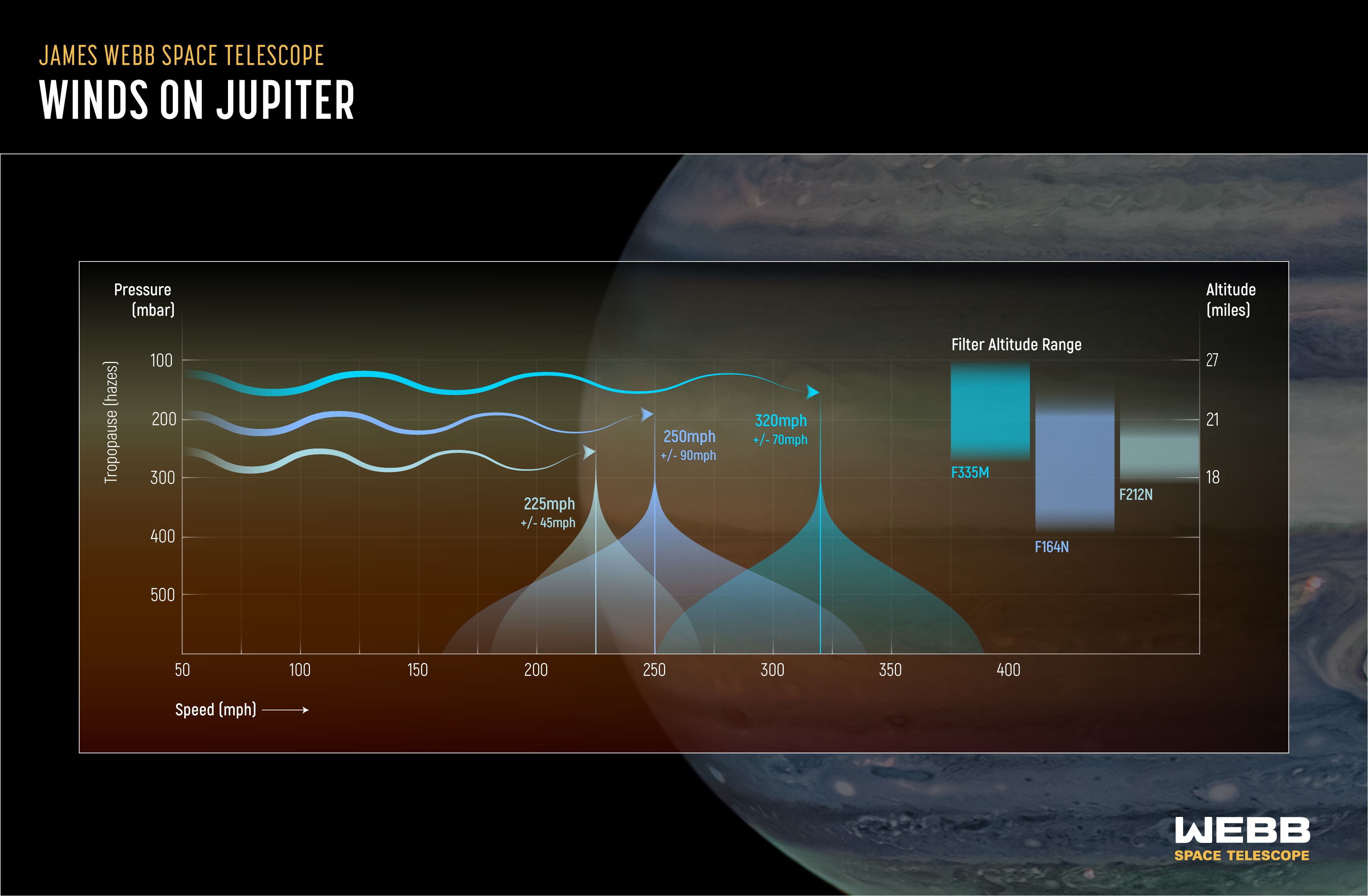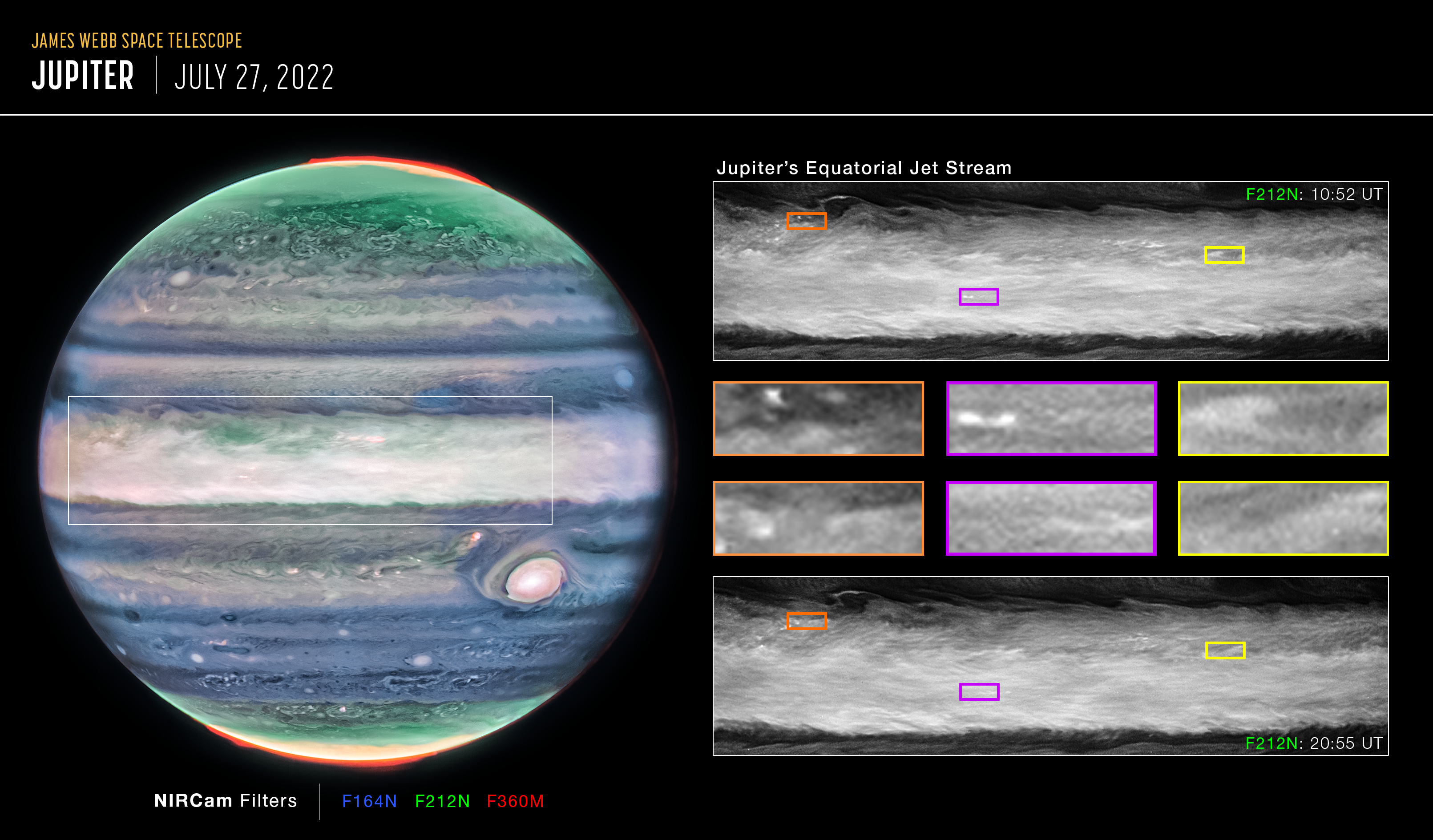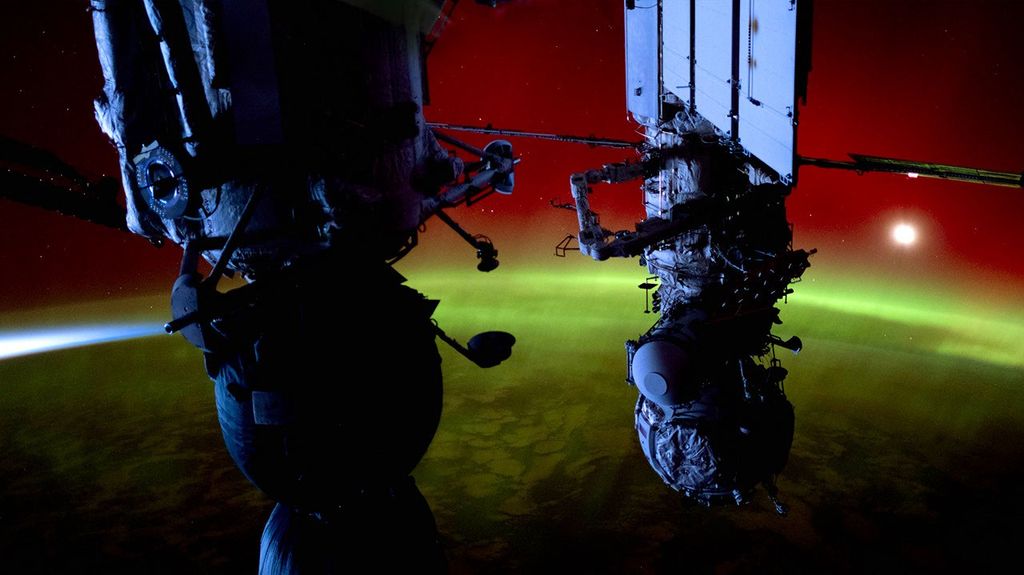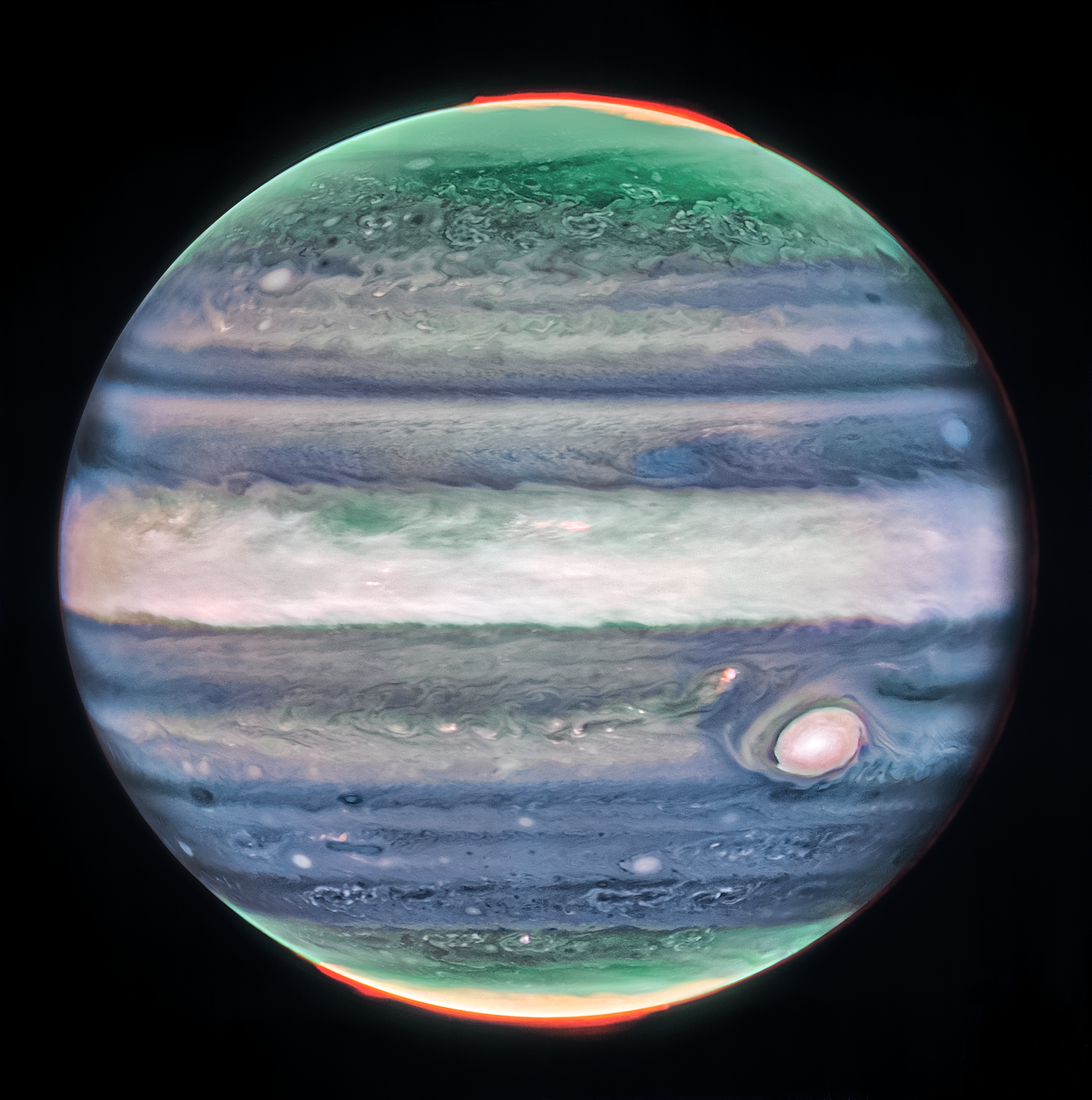1 min read
Jupiter’s Atmosphere (Illustration)

Astronomers using NASA’s James Webb Space Telescope have discovered a high-speed jet stream traveling over Jupiter’s equator above the main cloud decks. The jet is traveling 320 miles per hour (515 kilometers per hour). It is located around 25 miles (40 kilometers) in altitude, in Jupiter’s lower stratosphere, just above the tropospheric hazes next to the boundary between the layers.
Jupiter has a layered atmosphere, and this illustration displays how Webb is uniquely capable of collecting information from higher layers of the altitude than before. Scientists were able to use Webb to identify wind speeds at different layers of Jupiter’s atmosphere in order to isolate the high-speed jet. The observations of Jupiter were taken 10 hours apart, or one Jupiter day, in three different filters, noted here, each uniquely able to detect changes in small features at different altitudes of Jupiter’s atmosphere.
Extended Description and Image Alt Text
Extended Description
Image Alt Text
A portion of the graphic that displays wind speeds on Jupiter at different altitudes. The portion of this graphic shows the ends of three arrows that travel across the graphic from the left to the right. The top most arrow (colored in sky blue) extends the farthest right to about 3/4 the way across the graphic, the middle arrow (colored in periwinkle) extends to a little less than halfway across the graphic, and the bottom arrow (colored in light grey) extends to about 1/4 the way across the graphic. Extending out below each arrow is a cone of the same color to indicate the +/- error margin. There is Webb's image of Jupiter in the background of the graphic.
- Release DateOctober 19, 2023
- Science ReleaseNASA’s Webb Discovers New Feature in Jupiter’s Atmosphere
- CreditImage: NASA, ESA, CSA, STScI, Ricardo Hueso (UPV), Imke de Pater (UC Berkeley), Thierry Fouchet (Observatory of Paris), Leigh Fletcher (University of Leicester), Michael Wong (UC Berkeley); Illustration: Andi James (STScI)
Related Images & Videos

Jupiter Jet Pullouts (NIRCam Image)
Researchers using NASA’s James Webb Space Telescope’s NIRCam (Near-Infrared Camera) have discovered a high-speed jet stream sitting over Jupiter’s equator, above the main cloud decks. At a wavelength of 2.12 microns, which observes between altitudes of about 12-21 miles (20-35...
Share
Details
Laura Betz
NASA’s Goddard Space Flight Center
Greenbelt, Maryland
laura.e.betz@nasa.gov
NASA, ESA, CSA, STScI, Ricardo Hueso (UPV), Imke de Pater (UC Berkeley), Thierry Fouchet (Observatory of Paris), Leigh Fletcher (University of Leicester), Michael Wong (UC Berkeley)
Andi James (STScI)
































